UPDATE: Mucha’s “Slav Epic” in Transit
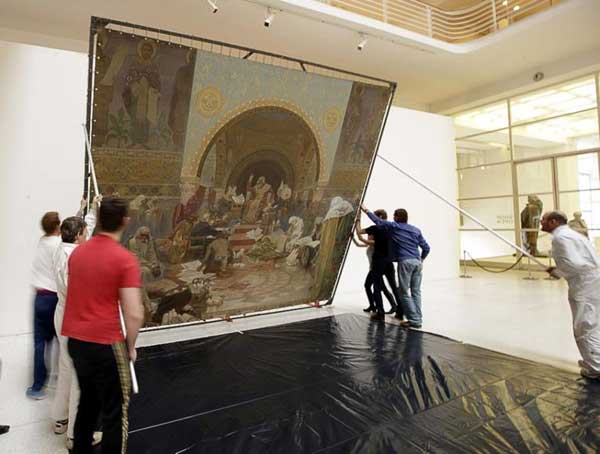
Mucha’s Slav Epic during installation in 2011. Courtesy: The Art Newspaper.
Readers – An update on our post of February 2017 – Mucha’s “Slav Epic” On Tour – is in order, as the works by now have opened in exhibition in Tokyo, and the risks inherent in their travel will be made evident soon.
Patrick Connors, a painter with 35 years of extensive professional practice, has written to ArtWatch, insisting that there is “little argument for any legitimate reasons that these fragile works should travel.” He writes on the cultural significance of the works themselves:
My mother’s family is Czech and much of the family still resides in Strakonice, about 90 miles south of Prague. I have seen these marvelous canvases in person in Czech on several occasions. The Mucha canvases are a cultural legacy to the Czech people […]
That they are now seen as simply a ‘cash cow’ for those in charge of their welfare is worrisome to say the least. On the impact of travel overseas on the canvases’ condition: Although it did not specify what type of tempera was used, it may refer to several vehicles, painting layers especially on large canvases are prone to physical and chemical instability when circumstances are good. The stresses and traumas that these works of art will endure as evident from their previous travel, ensures further substantial damage.
Essentially the three main components involved in these paintings: 1. canvas, 2. oil, and 3. tempera each have inherent physical and chemical properties that make adhesion problematic when atmospheric or physical changes occur. Each component expands and contracts at different rates and will cause a microscopic break or fissure with the other. Part of the insidious way oil paintings deteriorate is due to the damage not showing immediately but later with flaking, visible cracks and worse. We hope this brings even greater light to the implications of traveling works abroad on blockbuster exhibitions.
By Ruth Osborne / Patrick Connors



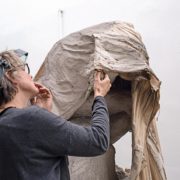
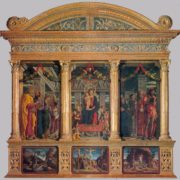
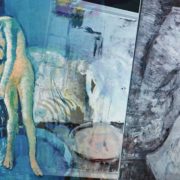
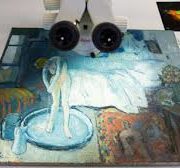




Leave a Reply
Want to join the discussion?Feel free to contribute!